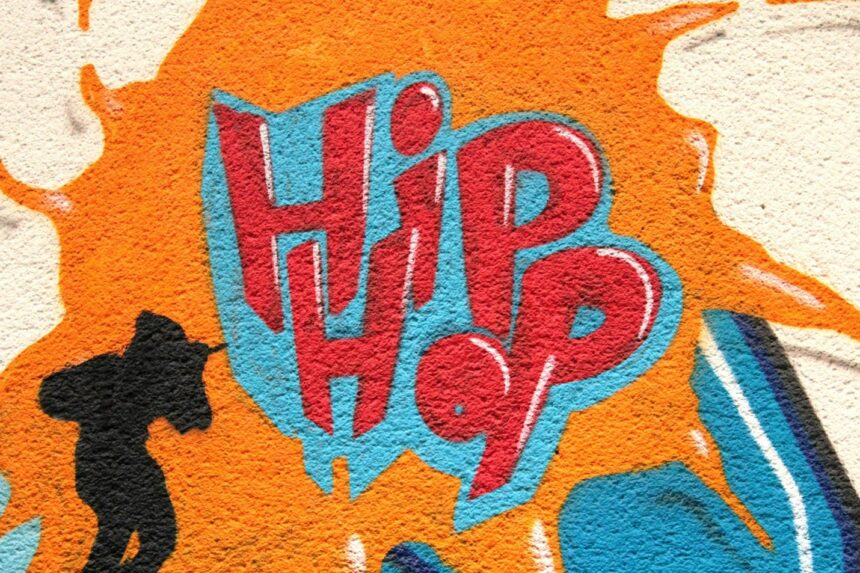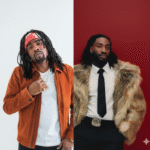Introduction
It started on the streets of the Bronx in the early 70s and pushed on to today’s global stage.
That’s Hip-Hop, one of our time’s most influential cultural movements. Hip-hop is not just a form of music but also a way of life. It combines social criticism, artistic expression, fashion, and community empowerment. Hip-hop came to be out of the creative energy of underprivileged communities. It became a novel way for people to express how they saw their reality and as a way for them to fight against social injustice.
When Hip-Hop first started, it was a dynamic mix of breakdancing, Graffiti Art, MCing, and DJing. It was all about hardiness and the ‘spirit of the struggle .’Since then, a lot of water has flowed into the sea. The genre has developed into a broad and complicated art form, its legacy felt everywhere.
This article examines the genre’s development and heritage. We cover hip-hop’s early origins, its golden period, diversity, global popularity, and cultural sway – all while reaffirming the positive contribution this art form has made to communities all over the world.
The Roots of Hip-Hop
Let’s start at the beginning. Picture the 1970s in the poor areas of the Bronx. People needed an outlet, something to escape from urban decay, their complicated lives, and the breakdown of social structures. Artists found escape in making new sounds and expressing themselves through original art.
The very first Hip-Hop was born at a back-to-school party on August 11. Cindy Campbell needed new school clothes and decided on a fundraiser. Her brother, DJ Kool Herc, isolated and extended the beats of soul- and funk records at the party and created new pulsing foundations. Party-goers loved it!
Emcees followed to tell their stories through lively and often spontaneous poetry, creating ‘MCing.’ Breakdancing and localized graffiti followed, creating a ‘cultural ecosystem’ that developed organically. In vacant lots, visual artists and dancers expressed themselves as if on stage.
Not just about the music.
These four elements – breakdancing, DJing, MCing, and graffiti – became ways for communities to share their dreams and challenges. It was never just about the music. Hip-hop was a cultural movement that gave people power and a sense of identity in a harsh world.
Hip-Hop’s Expansion – The Golden Age
Most people will agree that the 1980s and 1990s were the golden age of Hip-Hop.
In these years, Hip-Hop awakened. It was no longer just part of local ‘block associations’ or underground parties. Hip-Hop became a mainstream sensation.
Legendary groups were born. Public Enemy, Run-DMC, and N.W.A. broke through social boundaries. Suddenly, through Hip-Hop, they had a voice. Their songs resonated with audiences who saw their own hardships mirrored in unapologetic lyrics and bold words. The music tackled social injustice, racial inequity, and why there was an economic divide.
The golden age was diverse.
On the one hand, gangster rap painted a picture of life on the wrong side of the tracks, but on the other hand, conscious rap criticized the social systems of the era and advocated change. Though varied, these approaches expanded hip-hop beyond music and influenced fashion, language, and society.
During this time, production methods underwent a radical change as well. Sampling, beatboxing, and turntablism developed and became sophisticated artistic mediums. Combining these elements drove a creative blast that made Hip-hop known for its originality.
Diverse Subgenres and Modern Shifts
And so, music progressed into the new millennium. Hip-Hop wasn’t left behind and saw the development of several subgenres. Where the 80s and ’90s meant depths in lyrics and telling stories through music, the golden age now gave way to the modern: trap, drill, and mumble rap. Mumble rap, for instance, wasn’t always understandable but melodious.
Trap music had booming basslines and haunting melodies and focused on the grim realities of street life. Drill originated in the UK and cities like Chicago and was raw with conflict.
Among controversy about lyrics and how simple they seem, the ‘new’ Hip-Hop is still, in essence, the same Hip-Hop from the Bronx. The current subgenres still show us the fluidity of the art form and how music can be reinvented.
The digital revolution played a vital role in new Hip-Hop. Advances in technology and the rise of social media meant that new, unknown artists could now bypass the radio and record label ‘gatekeepers.’ This democratization of production and distribution has led to a flood of creative voices. New stories can be told – each influenced by unique cultural and regional influences.
Hip-Hop as a Global Trend
Today, Hip-Hop’s influence stretches far beyond the urban struggle in New York City. It is now a universal language found on every continent on earth. Hip-Hop is adaptable and resonates with listeners in different cultural contexts while providing a stage for stories to be told. It has woven itself into the fabric of society.
Asia and Africa
For example, Nigerian Afrobeats-inspired rap and K-hip-hop from South Korea are gaining global traction, thanks to platforms like TikTok and Spotify.
Hip-hop is a medium for protest and social commentary. Marginalized communities can give voice to their struggles and say who they are through music. No matter where you are and in which country, you now have a voice that cannot be silenced. Hip-hop acts as a bridge between different cultures and allows people to share experiences.
The Impact of Hip-Hop
It began as a music and personal expression but morphed into a cultural revolution and a way to change societies.
- Graffiti was once vandalism. Today it is urban art that makes public spaces open-air galleries.
- Even breakdancing today is a respected performance art and a competitive sport in countries everywhere.
- Hip-hop also impacted The culture turned ‘visual’ through ‘urban style’ and streetwear. Think bold graphics, oversized silhouettes, and statement accessories: it’s all across fashion runways and retail stores.
- Hip-Hop encourages self-expression. It is a collective identity built on a foundation of hope and resiliency. It has always been a force of enablement.
How Hip-Hop changed society is evident in how it shaped cultural dialogues, mobilized communities and effected social change.
The Future of Hip-Hop
We’ve seen that Hip-Hop can repetitively evolve and modify without losing sight of its roots. Each new era adds layers to the chronicles of the genre. Today, Hip-Hop is more energetic and inclusive than ever!
Key trends and developments
- Music by AI. Artificial intelligence has changed the world. Artists can now generate beats, tunes, and even words for songs in a few minutes. Yes, life has gotten easier, but AI also raises questions about being truthful and genuine. Hip-hop artists who embrace AI but can still be original and maintain their own creativity will likely have an edge.
- Social Media. The fight for attention is on! People find their Hip-Hop on Instagram, TikTok, and YouTube with ‘challenges’ and new music snippets driving interaction with fans.
- Web3 Integration and NFTs. Blockchain technology lets hip-hop musicians diversify their income sources. With NFTs, they may offer virtual meet-and-greets and unique material like previously unreleased music. Supporters can so directly assist their preferred artists by providing them with additional funds and chances to succeed.
- Independent musicians. Independent musicians can now do what they want without involving major labels. Sites like DistroKid and TuneCore give them more choices about their income and artistic direction.
Hip-Hop Fun Facts Through the Years
- One of the first hip-hop songs to succeed in the conventional market was The Sugarhill Gang’s ‘Rapper’s Delight’ from 1979. None of the group members came from the Bronx!
- Quick mix theory. This is a technique Grandmaster Flash thought of first. It involves blending different records to create a continuous flow of music.
- The First Grammy for Rap: DJ Jazzy Jeff & The Fresh Prince received the first Grammy Award for Best Rap Performance in 1989 for their song ‘Parent’s Just Don’t Understand.’
- Run-DMC’s trademark look of sporting Adidas sneakers without laces was a rebellious protest against prison culture, in which shoelaces were routinely taken away to stop prisoners from using them as weapons or for suicide.
- Hip-hop has expanded to every corner of the world, with local musicians customizing the genre to represent their own cultural experiences and languages, generating distinctive subgenres such as French rap, Korean hip-hop (K-hip-hop), and Nigerian hip-hop.
Conclusion
The power of hip-hop lies in the fact that the genre can reflect and shape the experiences of its audience. It is the language of those who dare to imagine a better world.
Hip-hop invites all of us to join in its evolving conversation. The dialogue is shaped by inclusivity, creativity, and the spirit of togetherness in the community. Its journey is far from over! The legacy of Hip-Hop will continue to empower and connect future generations in ways that we can only imagine.
Resources
Image by Ben Wiens on Unsplash.
https://abstracthiphop.com/the-evolution-of-hip-hop-music-a-journey-through-time-and-culture/
https://kenyainsights.com/the-evolution-of-hip-hop-a-51-year-journey-through-music-and-culture/
https://influenceandsounds.com/the-evolution-of-hip-hop/
https://handmadehiphop.com/2025-is-here-heres-what-you-should-know/



